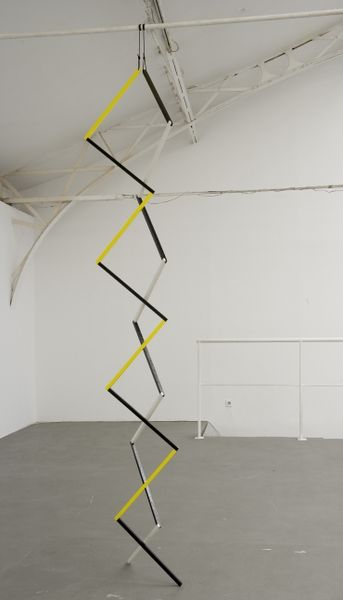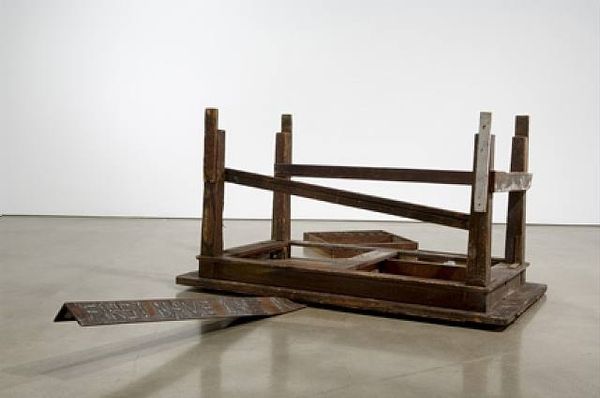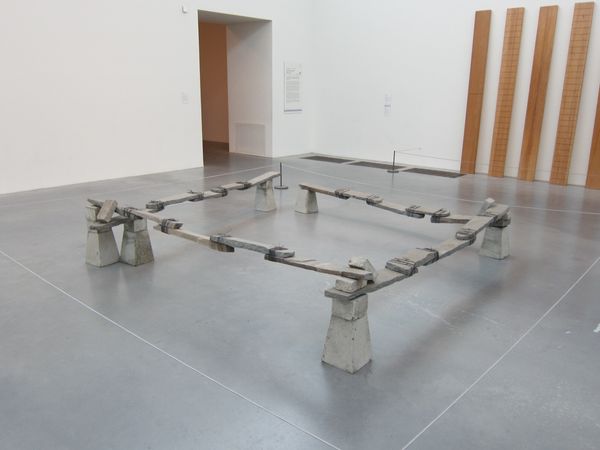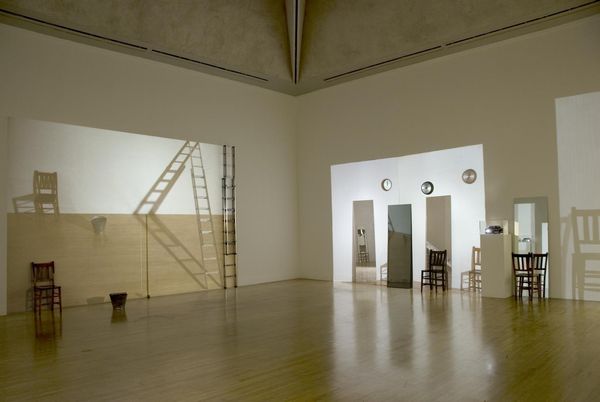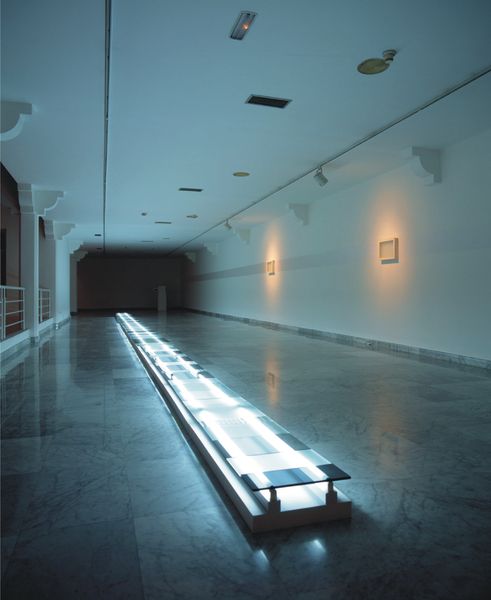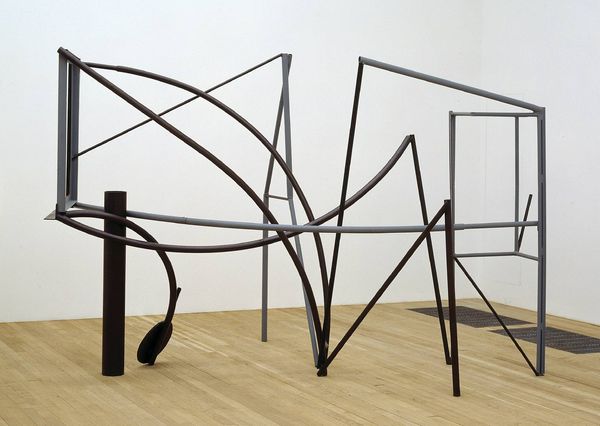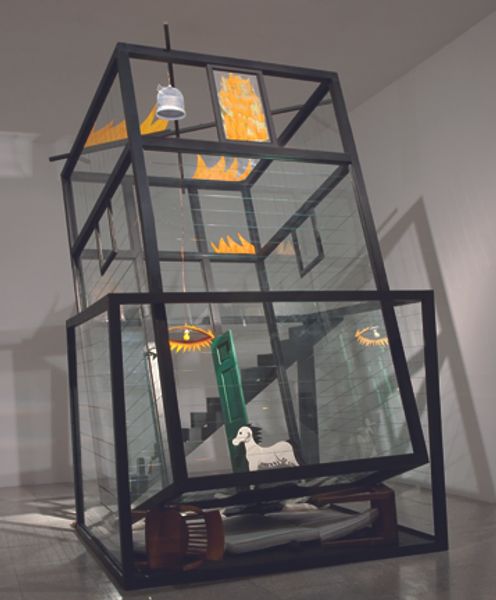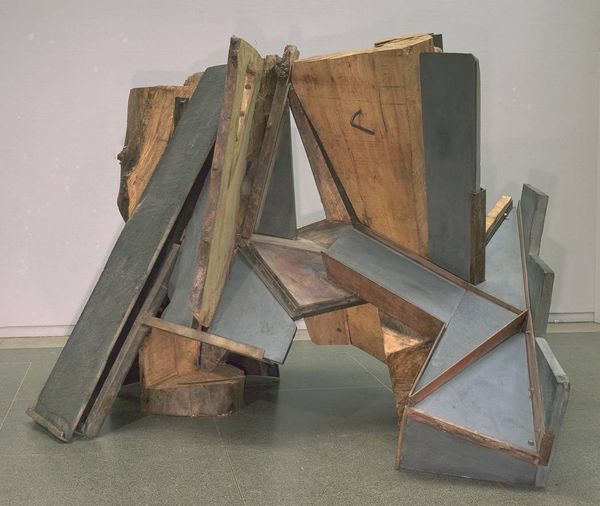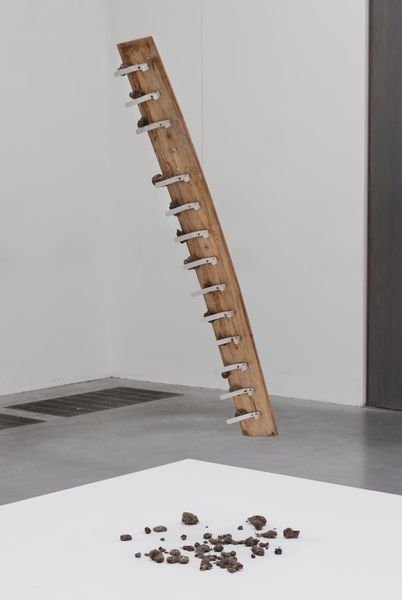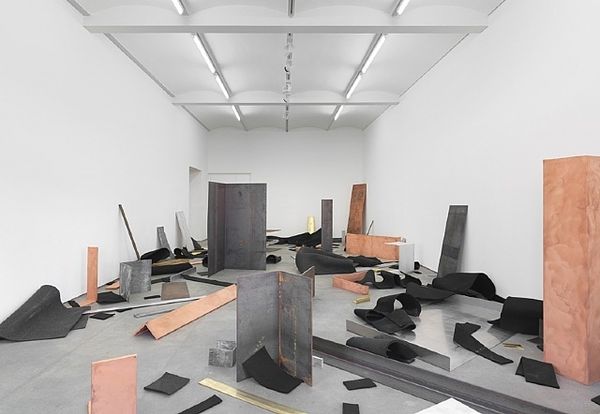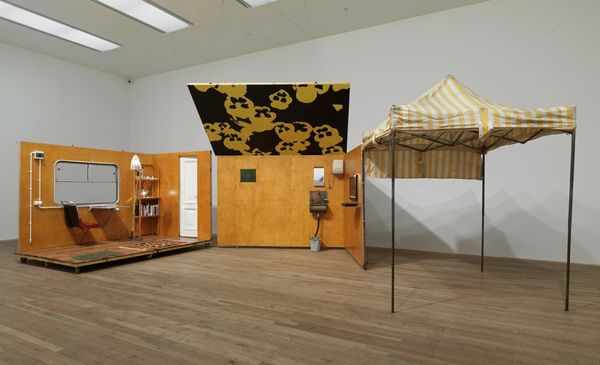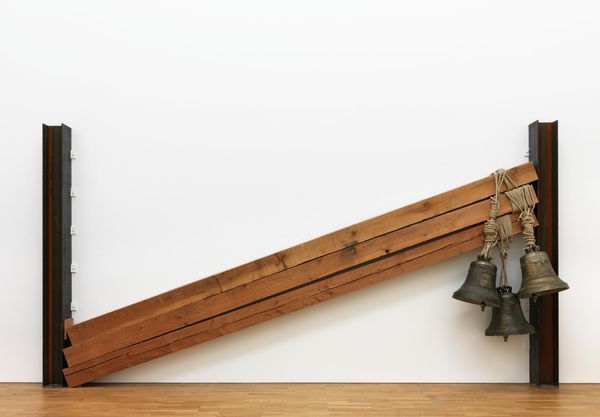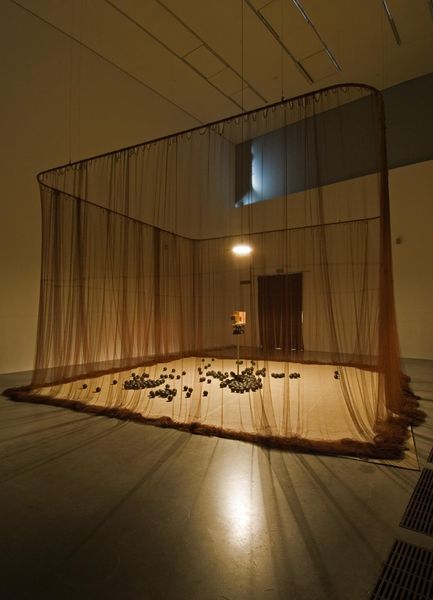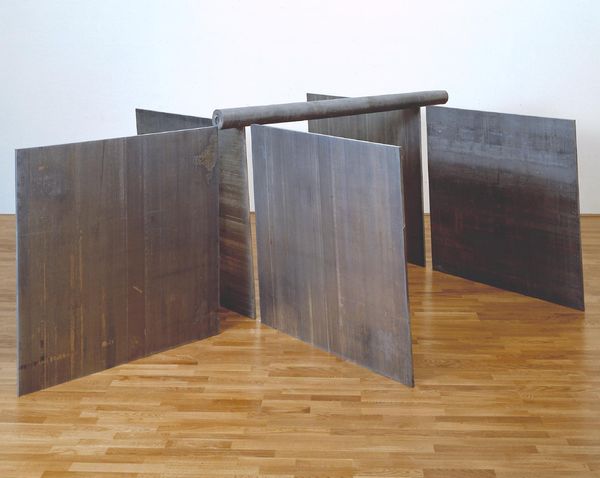
Dimensions: display dimensions variable
Copyright: © Jannis Kounellis | CC-BY-NC-ND 4.0 DEED, Photo: Tate
Curator: This untitled installation by Jannis Kounellis at the Tate consists of steel beams arranged on a carpet of oriental rugs. It's a powerful and stark visual statement. Editor: My first impression is one of tension. The sharp angles of the steel, contrasted with the softness of the carpets, creates a striking disharmony. Curator: The steel beams, like fallen crosses, layered on these intricate rugs... it evokes the weight of history, perhaps the relics of conflict. A symbolic clash. Editor: Yes, but consider the form. The raw steel disrupts the delicate patterns, creating a literal barrier. It's a deconstruction of space, a visual rupture. Curator: Absolutely, but the rug motif is critical. It’s a cultural artifact, laden with its own history, and contrasts beautifully with the cool, hard lines of the steel. Editor: I see the visual interplay, the semiotic potential of the rugs and steel. It's about the syntax of objects in space, each holding its own weight and mass. Curator: Ultimately, a juxtaposition of the industrial and the domestic, the sacred and the profane. Kounellis seems to be exploring the cultural and psychological weight of these familiar forms. Editor: I appreciate how our analysis complements one another, revealing both formal and symbolic dimensions.
Comments
Join the conversation
Join millions of artists and users on Artera today and experience the ultimate creative platform.
tate 7 months ago
⋮
This installation consists of over thirty crucifixes made out of rusty steel girders bolted together, with over one hundred Turkish carpets and kilims (woven rugs) covering the floor beneath. A hat and coat also hang at one corner of the room. Each crucifix sits on its side at a thirty-degree angle to the floor, resting on the tip of its longer arm, the tip of one of its shorter arms and a third supporting girder jutting out from the back. The crosses are arranged in two rows in an overlapping formation so that the whole installation resembles a complex and dense architectural construction. The rugs beneath the crosses are old, worn and multi-coloured, though dark red predominates. They form a large rectangle and overlap so that no area of floor is visible beneath the crosses. At one end of the structure two meat hooks hang from two holes in one of the girders. From these hooks are hung a grey herringbone tweed overcoat and a black moleskin trilby hat. The dimensions of the installation vary depending on the space available, but the work usually stretches to about twenty metres in length by seven or eight metres wide.
